Goodbye to Cynicism
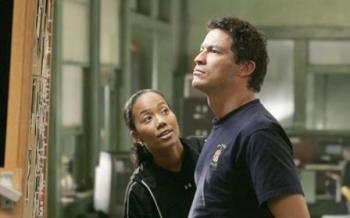 The 58th – and second-to-last – episode of The Wire, David Simon’s sociological HBO drama about Baltimore, is titled “Clarifications,” and one scene succinctly serves that purpose. When McNulty takes his faked serial killer of homeless men to FBI profilers, they nail the detective’s character in a few sentences based on his “evidence”: The murderer, they say, is a high-functioning alcoholic who works in a bureaucracy and has a problem with authority. McNulty – in Dominic West’s performance, always lacking self-awareness – can barely cloak his petrified amusement. He seems to be thinking: Am I that easy?
The 58th – and second-to-last – episode of The Wire, David Simon’s sociological HBO drama about Baltimore, is titled “Clarifications,” and one scene succinctly serves that purpose. When McNulty takes his faked serial killer of homeless men to FBI profilers, they nail the detective’s character in a few sentences based on his “evidence”: The murderer, they say, is a high-functioning alcoholic who works in a bureaucracy and has a problem with authority. McNulty – in Dominic West’s performance, always lacking self-awareness – can barely cloak his petrified amusement. He seems to be thinking: Am I that easy?

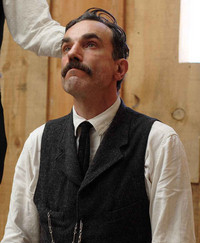 A heretical question about Paul Thomas Anderson’s There Will Be Blood: Is Daniel Plainview a good person? The inquiry is an overstatement, because the answer is obvious: Of course not. But contrary to
A heretical question about Paul Thomas Anderson’s There Will Be Blood: Is Daniel Plainview a good person? The inquiry is an overstatement, because the answer is obvious: Of course not. But contrary to  As a member of the choir, I ran screaming from the church because of Michael Moore’s preaching in Sicko. Plus: the equally inept Infamous.
As a member of the choir, I ran screaming from the church because of Michael Moore’s preaching in Sicko. Plus: the equally inept Infamous. My first thought after watching Joel and Ethan Coen’s No Country for Old Men – amid groans from others in the theater – was that I understood why some people hate it.
My first thought after watching Joel and Ethan Coen’s No Country for Old Men – amid groans from others in the theater – was that I understood why some people hate it.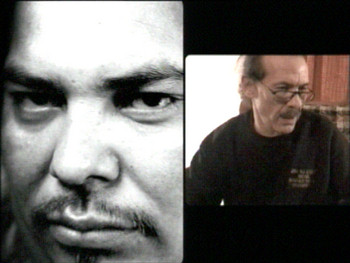 The guy who dominates Stefan Nadelman’s documentary short Terminal Bar could be related to Robert Crumb, both in his physical features and his matter-of-fact way. He talks about everything from death by alcohol to bathroom blowjobs to the “destituted” people who frequented the titular establishment where he tended bar for a decade. And like the famous cartoonist Crumb, he seems perpetually amused, and it looks suspiciously like a defense mechanism.
The guy who dominates Stefan Nadelman’s documentary short Terminal Bar could be related to Robert Crumb, both in his physical features and his matter-of-fact way. He talks about everything from death by alcohol to bathroom blowjobs to the “destituted” people who frequented the titular establishment where he tended bar for a decade. And like the famous cartoonist Crumb, he seems perpetually amused, and it looks suspiciously like a defense mechanism.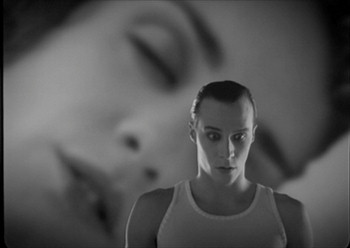 An object within an object of the same type – the novel within a novel, the film within a film – is rarely considered out of its context. Its meanings, and its narrative or thematic roles, are derived from its conversation with the larger work. But if the object is nearly whole – that is, if it’s not just a fragment, if we have a reasonably full sense of its shape, structure, and content – looking at it in isolation can bear fruit and is an act of respect.
An object within an object of the same type – the novel within a novel, the film within a film – is rarely considered out of its context. Its meanings, and its narrative or thematic roles, are derived from its conversation with the larger work. But if the object is nearly whole – that is, if it’s not just a fragment, if we have a reasonably full sense of its shape, structure, and content – looking at it in isolation can bear fruit and is an act of respect.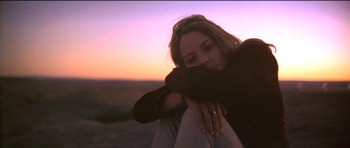 My version of Robert Zemeckis’ Contact uses the same source material but starts at the 33-minute, 25-second mark and ends at one hour, 26 minutes, and five seconds. It’s a marvel of economy. Let me explain myself.
My version of Robert Zemeckis’ Contact uses the same source material but starts at the 33-minute, 25-second mark and ends at one hour, 26 minutes, and five seconds. It’s a marvel of economy. Let me explain myself.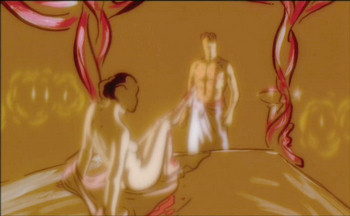 The animated T.R.A.N.S.I.T. is a feature-film plot distilled into 10 minutes, and it shows the ways in which the short film is more forgiving than longer cinematic forms. This movie operates wordlessly almost as a plot outline, and it’s gorgeous to look at and challenging to keep up with. It feels like a small, perfectly cut gem. On reflection, that’s a good analogy, because Piet Kroon’s 1997 short is a beautiful piece of visual craftsmanship that fails as art in any rational analysis.
The animated T.R.A.N.S.I.T. is a feature-film plot distilled into 10 minutes, and it shows the ways in which the short film is more forgiving than longer cinematic forms. This movie operates wordlessly almost as a plot outline, and it’s gorgeous to look at and challenging to keep up with. It feels like a small, perfectly cut gem. On reflection, that’s a good analogy, because Piet Kroon’s 1997 short is a beautiful piece of visual craftsmanship that fails as art in any rational analysis. Like most of his movies, David Cronenberg’s
Like most of his movies, David Cronenberg’s  The only connection that I could quickly find between screenwriter Guillermo Arriaga and novelist Paul Auster is that they had a
The only connection that I could quickly find between screenwriter Guillermo Arriaga and novelist Paul Auster is that they had a 